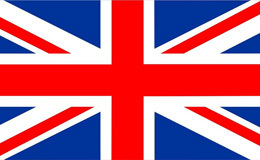11
2025
-
08
Comparing 3 Phase Digital Energy Meters: Which One is Right for You?
Comparing 3 Phase Digital Energy Meters: Which One is Right for You? In the world of electrical systems, the demand for effective energy management tools is increasing. Among these tools, **3 phase digital energy meters** stand out as essential devices for measuring energy consumption accurately. Whether you are running a business or managing a large facility, understanding how to choose the right
Author:
Comparing 3 Phase Digital Energy Meters: Which One is Right for You?
In the world of electrical systems, the demand for effective energy management tools is increasing. Among these tools, **3 phase digital energy meters** stand out as essential devices for measuring energy consumption accurately. Whether you are running a business or managing a large facility, understanding how to choose the right energy meter can lead to significant savings and efficiency improvements. This article provides an in-depth comparison of various 3 phase digital energy meters, helping you make an informed decision.
Table of Contents
- 1. Introduction to 3 Phase Digital Energy Meters
- 2. How 3 Phase Digital Energy Meters Work
- 3. Key Features to Consider when Choosing a Meter
- 4. Top 3 Phase Digital Energy Meters on the Market
- 5. Comparing Specifications and Pricing
- 6. Installation Tips for 3 Phase Digital Energy Meters
- 7. Maintenance and Troubleshooting
- 8. Conclusion
- 9. Frequently Asked Questions (FAQs)
1. Introduction to 3 Phase Digital Energy Meters
3 phase digital energy meters are devices designed to measure electrical energy consumption across three-phase systems. These meters are crucial for both commercial and industrial applications, where three-phase power systems are commonly used. Unlike single-phase meters, 3 phase meters can handle higher power loads and provide more accurate readings essential for load management and cost efficiency.
2. How 3 Phase Digital Energy Meters Work
At its core, a **3 phase digital energy meter** operates by measuring the voltage and current flowing through the electrical system. The device calculates the energy consumed by multiplying the voltage, current, and power factor. This data is displayed on a digital screen, providing real-time insights into energy usage.
Typically, these meters include features such as:
- **Real-time monitoring**: Displays current energy consumption.
- **Data logging**: Stores historical data for analysis.
- **Communication interfaces**: Allows connection with other systems for centralized monitoring.
3. Key Features to Consider when Choosing a Meter
When selecting a **3 phase digital energy meter**, several key features can significantly impact performance and usability. Consider the following:
3.1 Accuracy and Calibration
Accuracy is paramount in energy measurement. Look for meters that offer high precision with calibration options to ensure reliable readings over time.
3.2 Communication Capabilities
Many modern energy meters come with built-in communication interfaces such as RS-485, Ethernet, or Wi-Fi. These options facilitate data transfer to monitoring systems, enabling better energy management.
3.3 Display and User Interface
A clear, intuitive display enhances usability. Meters with user-friendly interfaces make it easier to navigate settings and view data.
3.4 Compliance and Certifications
Ensure that the meter complies with relevant industry standards and certifications, which can affect reliability and accountability.
3.5 Installation and Compatibility
Consider how easy it is to install the meter and whether it is compatible with your existing electrical systems. Some meters may require professional installation.
4. Top 3 Phase Digital Energy Meters on the Market
Below is a selection of well-regarded **3 phase digital energy meters** that professionals in the industry often recommend:
4.1 Meter A: XYZ Energy Monitor
The XYZ Energy Monitor features advanced communication capabilities, making it suitable for integration into smart grids. With a precision rating of ±0.5%, it ensures accurate readings.
4.2 Meter B: ABC Power Analyzer
With its robust construction and easy-to-read display, the ABC Power Analyzer is perfect for industrial applications. It offers extensive data logging features and supports remote monitoring.
4.3 Meter C: DEF Energy Management Device
This meter stands out for its user-friendly interface and cloud connectivity. It provides real-time data analysis and alerts for unusual energy consumption.
5. Comparing Specifications and Pricing
Understanding specifications and pricing helps in making a well-rounded decision. Here’s a comparative analysis of the top meters mentioned:
| Meter Model | Accuracy | Communication | Price |
|---|---|---|---|
| XYZ Energy Monitor | ±0.5% | RS-485, Ethernet | $200 |
| ABC Power Analyzer | ±0.2% | RS-485, Wi-Fi | $250 |
| DEF Energy Management Device | ±1% | Cloud Connectivity | $180 |
6. Installation Tips for 3 Phase Digital Energy Meters
Installing a 3 phase digital energy meter requires careful planning and safety measures. Here are some tips to ensure a successful installation:
6.1 Safety Precautions
Always prioritize safety by de-energizing the circuit before installation. Use appropriate personal protective equipment (PPE) to prevent electrical hazards.
6.2 Proper Configuration
Refer to the manufacturer's manual for configuration settings. Correctly setting the parameters ensures the meter functions as intended.
6.3 Test the Installation
After installation, conduct tests to ensure the meter accurately records energy consumption. This step can save time and troubleshoot issues early.
7. Maintenance and Troubleshooting
Regular maintenance is crucial for the longevity and accuracy of 3 phase digital energy meters. Follow these guidelines:
7.1 Routine Checks
Periodically check the meter for any signs of damage or wear. Ensure that connections are secure and that the display is functioning correctly.
7.2 Software Updates
If your meter has firmware or software, check for updates that may improve functionality or security.
7.3 Troubleshooting Common Issues
Consult the user manual for guidance on troubleshooting common problems such as display errors or connectivity issues.
8. Conclusion
Choosing the right **3 phase digital energy meter** is essential for effective energy management, especially in industrial and commercial settings. By evaluating your needs and the various features available in today’s models, you can select a meter that optimally meets your requirements. Investing in a high-quality energy meter not only improves efficiency but can also lead to significant cost savings in the long run.
9. Frequently Asked Questions (FAQs)
9.1 What is a 3 phase digital energy meter?
A 3 phase digital energy meter measures electrical energy consumption in three-phase power systems, providing accurate readings for better energy management.
9.2 How do I know which energy meter to choose?
Consider factors such as accuracy, communication capabilities, user interface, and compatibility with your electrical system when selecting an energy meter.
9.3 Can I install a 3 phase energy meter myself?
While some individuals may install the meter themselves, it is advisable to hire a professional electrician to ensure safety and proper installation.
9.4 How can I maintain my energy meter?
Regularly check for signs of damage, conduct routine tests, and keep the software updated to maintain functionality and accuracy.
9.5 What are the common issues with 3 phase digital energy meters?
Common issues can include display errors, connectivity problems, and inaccuracies in readings. Refer to the user manual for troubleshooting tips.
Key words:
Related news


![[object Object] [object Object]](https://omo-oss-image.thefastimg.com/portal-saas/new2023080419495759710/cms/image/138ba837-b50d-4ff3-a73c-2e6a2379c522.jpg)







